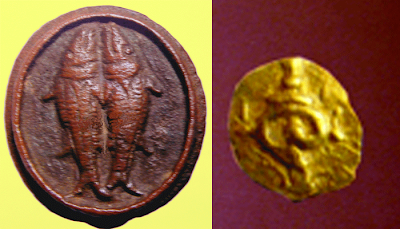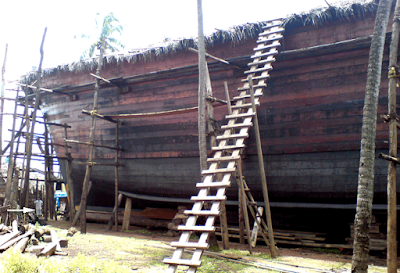Tracing roots of some of the common words and place names surprisingly leads us to locations beyond the shores our country from where our ancestors apparently set out on journeys several hundreds or thousands of years ago. Digging at the roots also reveal the evolutionary nature of many of the ancient words that might with passage of time have been modified to acquire newer shades of meaning in the true sense of growth and evolution.
ShirvaThe fascinating place-name is as mysterious as inscrutable it is. Shirva and Manchakal are twin urban villages to the south of the temple town of Udupi. The simple analysis Shir+va does not leads us anywhere as to it origin or meaning at the first attempt.
However,comparison with some similar place names throws some light on this word. Some of the village names that can be compared with Shirwa are:
Shirthadi, Shiriyara,
Shirur,Shiradi and
Shira. The common thread in these names is Shira or Sira.
Infact, the name 'Shiriyara' (or Siriyara) prompts us to link these villages with the famous name of Siri, a legend in the Karavali.
SiriAntiquity of the legendary name of Siri has been discussed in older posts. The roots of word Siri can be traced to some of the African heritages. Ethiopia has several places that contain the word Siri. Even the roots of the game Chenne ( Manquala games) popular since Siri days can be traced to African lands. Siri has been a popular word for Goddess of luck in Buddhism and Jainism and later it was adopted into Sanskrit as
Shri who is equivalent of Goddess Lakshmi. The common title 'Shri' bestowed on our men to denote respectability originally came from the name of symbolic Goddess of luck, prosperity and wealth.
Some of the place names like
Siriyara, Siribeedu,
Siribagilu, Shirlalu etc appear to have been directly related to the legend of Siri in Tulunadu. (In these names s- or sh- sounds have been used interchangeably by different users).
SiraHowever, the word Shira or Sira in our place names is not modification of Siri, but is an original word, though the words Siri and Sira appear to be interrelated in origin and evolution.
There are several distinct places known as Shira. The popular well known town Shira in Tumkur district, Karnataka is not the only example. There is a 'Shira' in Uttar Kashi district of Uttaranchal State in the northern India.. Besides there are several Shirur ( spelt variously as Shiroor, Sirur or Siroor etc) all over India.
However the word Sira, Siri and Siria can be traced in Africa and Europe.
Syria is the name of a State in Africa. There are many hills and villages known as 'Siri' or 'Sire' in and around Ethiopia (Africa), Norway and Sweden (Europe). Sira is also the name of river in Norway. Old west Norse priest had a title called
Sira. And in Nigeria a Siri (and dialect Sirawa) language is spoken.
These roots leads us to the conclusion that Tulu ancestors who immigrated to India from African Ethiopian roots in antiquity brought with them basic outlines of the legends connected with the 'Siri' of Tulu Siri paDdana.
These data suggest that the word Sira or Siri is not a word restricted to our region alone but rather transcontinental in nature that can be attributed to dispersal of the ancient word in tune with the human migration patterns.
Roots of the term SiraIn Indian languages the term Sira (or Shira) refers to head or peak (summit) in general. And possibly the Indian word
Shila (rock) is derived from the original word Shira (r >l conversion). In Phoenician languages the word 'tsur' means rock and the term 'Syria' is considered to have been derived from or related to the cited word 'tsur'. The rocks especially meteorites that fall into the earth were reverently worshipped in the ancient days as we see the importance attached to the rock at Kaaba.
In Persian languages the word '
Siria' means sunny bright glowing light etc, apparently refers indirectly to Sun or the 'Surya ' of Indian languages. Thus Siri, Sari, Sara, Siria, Siraj etc male/female personal names popular in different parts of Africa Europe and India have been derived from the word Siri or Sira. Siri is a name popular in Norway and Sweden as is in India. The Indian title for respectable males, 'Shri' is derived from the word 'Siri'.
We can trace the origin of the word to ancient Sumerian language (6000-4000 BCE) where we encounter the phrase such as “
E-gish-shir-gal “(=house of the great light). The Sumerian word 'Shir' or 'sher ' means to shine brightly.
The book of Ecclesiasticus of Old Testament is also known as the “
Book of Sirach”. or “
Ben Sira”. The book in Greek manuscripts is known as
Sophia Iesou uiou Seirach, which means "the Wisdom of Jesus, the son of Sirach". It is also known as Sophia Seirach (=the Wisdom of Sirach). The Hebrew fragments of Ecclesiasticus describes: "Wisdom of Simeon, the son of Yeshua, the son of Eleazar, the son of Sira".
Thus since the days of Sumerian civilization (6000-4000 BCE) and even during the beginning of Common Era the word 'Sira' meant divine light or God which suggests a connotation to the major source of light, the Sun. Further,the word Sira appears recurrently in Islamic tradition (600 CE onwards) too. Biographies of Prophet Muhammad are known as '
Sirah Rasul Allah'.The male Arabic name '
Siraj' means guiding light.
An overall analysis of the word suggests that Sira originally meant bright day light derived from the Sun. The light was considered heavenly and divine since it spread from the vast sky: auspicious and lucky because of its contrast with dark night. Similarly the meteorites that fell on the Earth from the sky were also called Sira, possibly because ancient people thought that it came from heaven. Because of this feelings, the meteorite fragment that survived while falling through the Earth's atmospheric shield were considered divine tokens, as perceived by the historical reverence attached to a specific basaltic rock at Kaaba. Thus Sira represented sky or that is above our head. This meaning was extended to represent top or summit portion of human body or peak of any hill.
Indian context
Migration of people from the African-Mediterranean region to India during several periods in the early human history obviously carried with them their cultural strains as well as their words. Their language was modified as a consequence of admixing with the places they settled but the basic words were absorbed into the new languages they adapted to. Thus five basic meanings were attributed or retained to the word Sira/Siri in the Indian context as follows:
Sira =the peak, the head, the top portion or summit. Sira> Shira
Sira =the rock, Sira>Sila
Sira =column, length or vein . Sire> Sele (=water bearing joint in the rock). Compare 'sele' (rock joint or water spring) with 'shile', the rock.
Sira =the divine light (Sun). Siria>Surya.
Siri =luck. 1.Heroine of an ancient Tulu paDdana (Siri), possibly Tulu equivalent of tamil Sangham literature. 2.Goddess of luck, prosperity and wealth in Buddhist and Jain traditions. 3.Also absorbed into Hindu pantheon of Gods as Shree or Lakshmi. 4.Siri.> Shri (=respectful Indian title of a prosperous man)
Our relevant village namesThe usually accepted Indian meaning of Shira(=head or peak )is not applicable in the case of many our village names that contain the word Shira or Sira.
The village name Shirā possibly means divine and/ or rocky. Similarly
Siriyara (= Siria+ara) and Shirthadi (Shiratta +aDi) might have been designated after the Siri, the Goddess of luck or the rocks. Note the word 'Siria' is similar to the Siria or Syria place/State name of the African continent.
Shirlal is Shirila+ āl or the river-side village of the Siris', the plural term Siris being applied to a group of legendary ladies associated with the paDdana story of the Siri. The
Shirahatti may be a divine village. However, in some of the villages known as 'Shiroor's along the coast, there are no trace of rocky outcrops or peaks worth describing. Hence, these Shiroors might have been named after Siri or the divine Sira.
Shirva (Shir+va) possibly means a village with rocky outcrops. Incidentally, an African dialect in Nigeria is also known as Sirawa. The suffix '-va' as village indicator is less common in Tulunadu, the only other example that comes to mind is 'Urva' (Uru+va) in Mangalore. The '-va' suffix may be a variant of '-ya' suffix as in Suria, Neri(y)a, Uliya etc.
It is no longer a mystery that vestiges of human evolution and migration have been preserved even in the evolution of words that have been handed out to us through generations.
®






